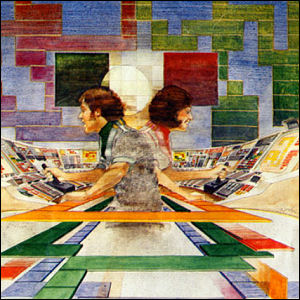 Atari releases Surround as a cartridge for the Atari 2600. Surround is “inspired” by the many 1970s arcade games which later, in turn, inspired the “light cycles” sequences in Tron.
Atari releases Surround as a cartridge for the Atari 2600. Surround is “inspired” by the many 1970s arcade games which later, in turn, inspired the “light cycles” sequences in Tron. ![]()

 Atari releases Surround as a cartridge for the Atari 2600. Surround is “inspired” by the many 1970s arcade games which later, in turn, inspired the “light cycles” sequences in Tron.
Atari releases Surround as a cartridge for the Atari 2600. Surround is “inspired” by the many 1970s arcade games which later, in turn, inspired the “light cycles” sequences in Tron. ![]()
 Atari releases the arcade video game Fire Truck, which requires two players to steer both ends of a speeding fire engine.
Atari releases the arcade video game Fire Truck, which requires two players to steer both ends of a speeding fire engine. ![]()
 Atari releases the baseball cartridge Home Run for the Atari 2600, beefing up the new console’s sports game library but not exactly wowing baseball fans with realistic graphics or game play.
Atari releases the baseball cartridge Home Run for the Atari 2600, beefing up the new console’s sports game library but not exactly wowing baseball fans with realistic graphics or game play. ![]()
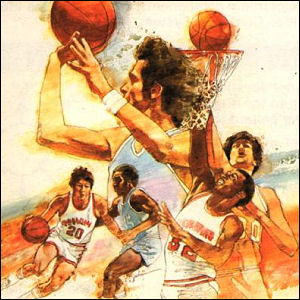 Atari releases the Basketball cartridge for the Atari VCS, one of the earliest home video games to show a vaguely 3-D perspective, and probably the best-known early sports game in the console’s library.
Atari releases the Basketball cartridge for the Atari VCS, one of the earliest home video games to show a vaguely 3-D perspective, and probably the best-known early sports game in the console’s library. ![]()
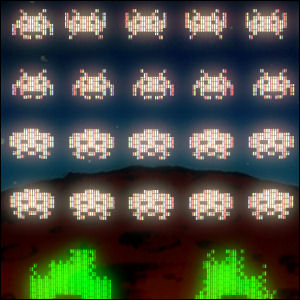 After its introduction in June in Japan, Space Invaders is introduced to the United States by Midway Manufacturing. Its space-war-themed action arrives just in time to cash in on the public’s fascination with space and science fiction, making it a major hit (the game is already well on its way to causign coin shortages in its native Japan). In America, it pushes the arcade video game industry into high gear, priming both the industry and the public for the boom years ahead. Space Invaders‘ success also convinces Taito to start an American operation rather than continuing to license its arcade games to Midway.
After its introduction in June in Japan, Space Invaders is introduced to the United States by Midway Manufacturing. Its space-war-themed action arrives just in time to cash in on the public’s fascination with space and science fiction, making it a major hit (the game is already well on its way to causign coin shortages in its native Japan). In America, it pushes the arcade video game industry into high gear, priming both the industry and the public for the boom years ahead. Space Invaders‘ success also convinces Taito to start an American operation rather than continuing to license its arcade games to Midway. ![]()
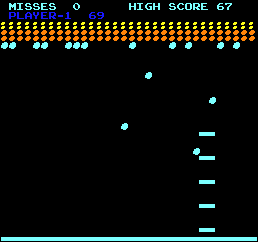 Atari releases the arcade game Avalanche, challenging players to catch falling rocks in a bucket without dropping anything; this game later serves as the basis for Activision’s Atari VCS cartridge Kaboom!.
Atari releases the arcade game Avalanche, challenging players to catch falling rocks in a bucket without dropping anything; this game later serves as the basis for Activision’s Atari VCS cartridge Kaboom!. ![]()
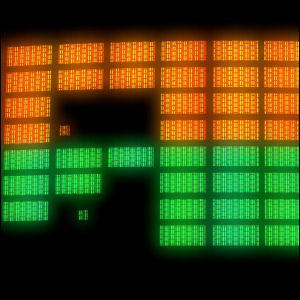 Atari releases the arcade video game Super Breakout, a sequel to the hit 1976 coin-op Breakout.
Atari releases the arcade video game Super Breakout, a sequel to the hit 1976 coin-op Breakout. ![]()
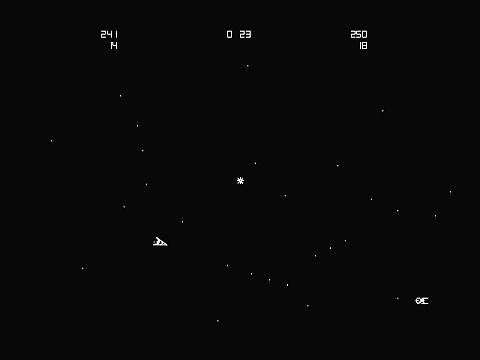 Cinematronics introduces the first vector graphics arcade game, Space Wars, designed and programmed by Larry Rosenthal, using Rosenthal’s “Vectorbeam” technology. The game is based on the 1960s mainframe game Spacewar!. The high-resolution vector graphics technology, which offers better graphics (at the cost of limiting them to black & white displays), becomes an arcade mainstay as other manufacturers such as Atari and Sega begin using similar displays.
Cinematronics introduces the first vector graphics arcade game, Space Wars, designed and programmed by Larry Rosenthal, using Rosenthal’s “Vectorbeam” technology. The game is based on the 1960s mainframe game Spacewar!. The high-resolution vector graphics technology, which offers better graphics (at the cost of limiting them to black & white displays), becomes an arcade mainstay as other manufacturers such as Atari and Sega begin using similar displays. ![]()
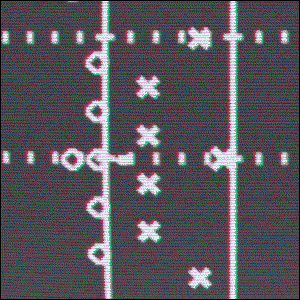 Atari releases the two-player arcade game Football, a refined version of an internal project called Xs and Os that has been in development for some time. Though it’s a well-executed basic football game, Football’s real innovation is its trackball controller, giving players fluid analog control over their onscreen counterparts.
Atari releases the two-player arcade game Football, a refined version of an internal project called Xs and Os that has been in development for some time. Though it’s a well-executed basic football game, Football’s real innovation is its trackball controller, giving players fluid analog control over their onscreen counterparts. ![]()
 Atari releases the Breakout cartridge for the Atari VCS, one of the console’s first-ever ports of an existing arcade game and – thanks to two years of advancements in technology – a more sophisticated game than the coin-op that inspired it, which could only display black & white graphics.
Atari releases the Breakout cartridge for the Atari VCS, one of the console’s first-ever ports of an existing arcade game and – thanks to two years of advancements in technology – a more sophisticated game than the coin-op that inspired it, which could only display black & white graphics. ![]()